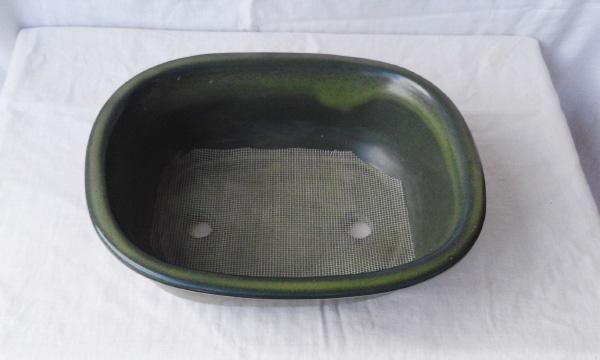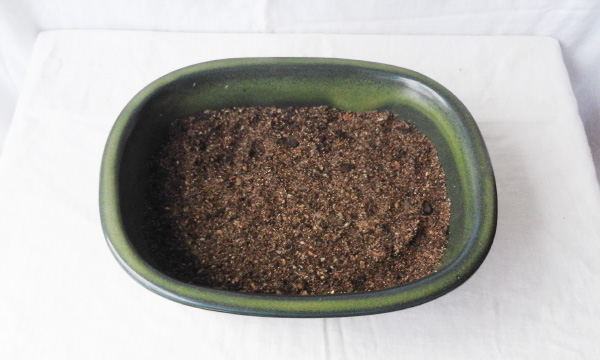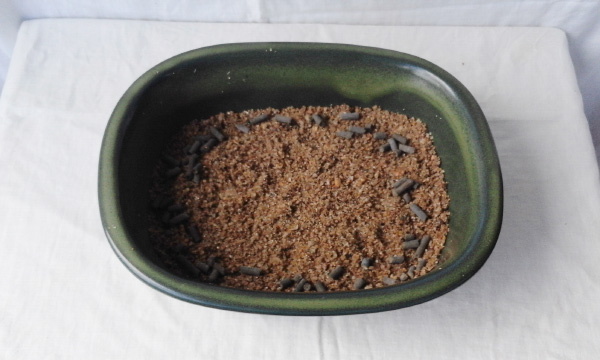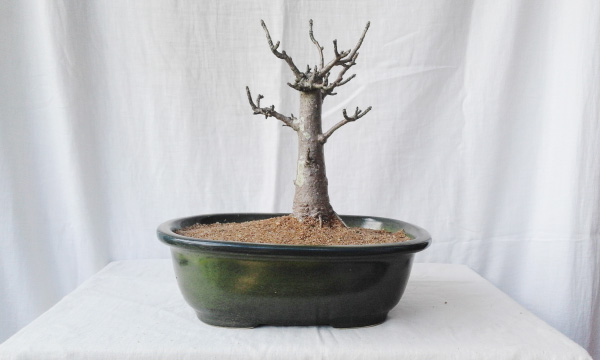Preparing a pot for a new occupant is a straight-forward process, but there are a few basic guidelines that should still be adhered to. The single most important aspect of growing any plant in a pot is drainage. All soil must drain well. If it does not, the plant will die. Good quality bonsai soil should have a decent quantity of coarse river sand or similar mixed in with the organic matter. This should provide sufficient drainage, but it is always good practice to add a layer of pure, clean river sand below the soil to improve drainage even further.
Apart from good drainage, good quality bonsai soil should also have a lot of organic nutrients and plant food mixed in. However, it is also a good idea to add in some solid, slow release plant food in granular form. The granules will slowly break down over the course of a few months, providing a stable environment for the new plant to grow in.
When the new plant is placed in the pot care must be taken to try and fill all the spaces between the roots with soil. Large air gaps provide places for bugs to build nests. Air gaps will also make the plant a bit unstable in the soil. Push the soil down around the planted tree firmly, but do not press down too hard, you will just squash all the air out of the soil.
Give the newly potted plant plenty of water, and place it in shade for at least two weeks, or until new shoots appear.




